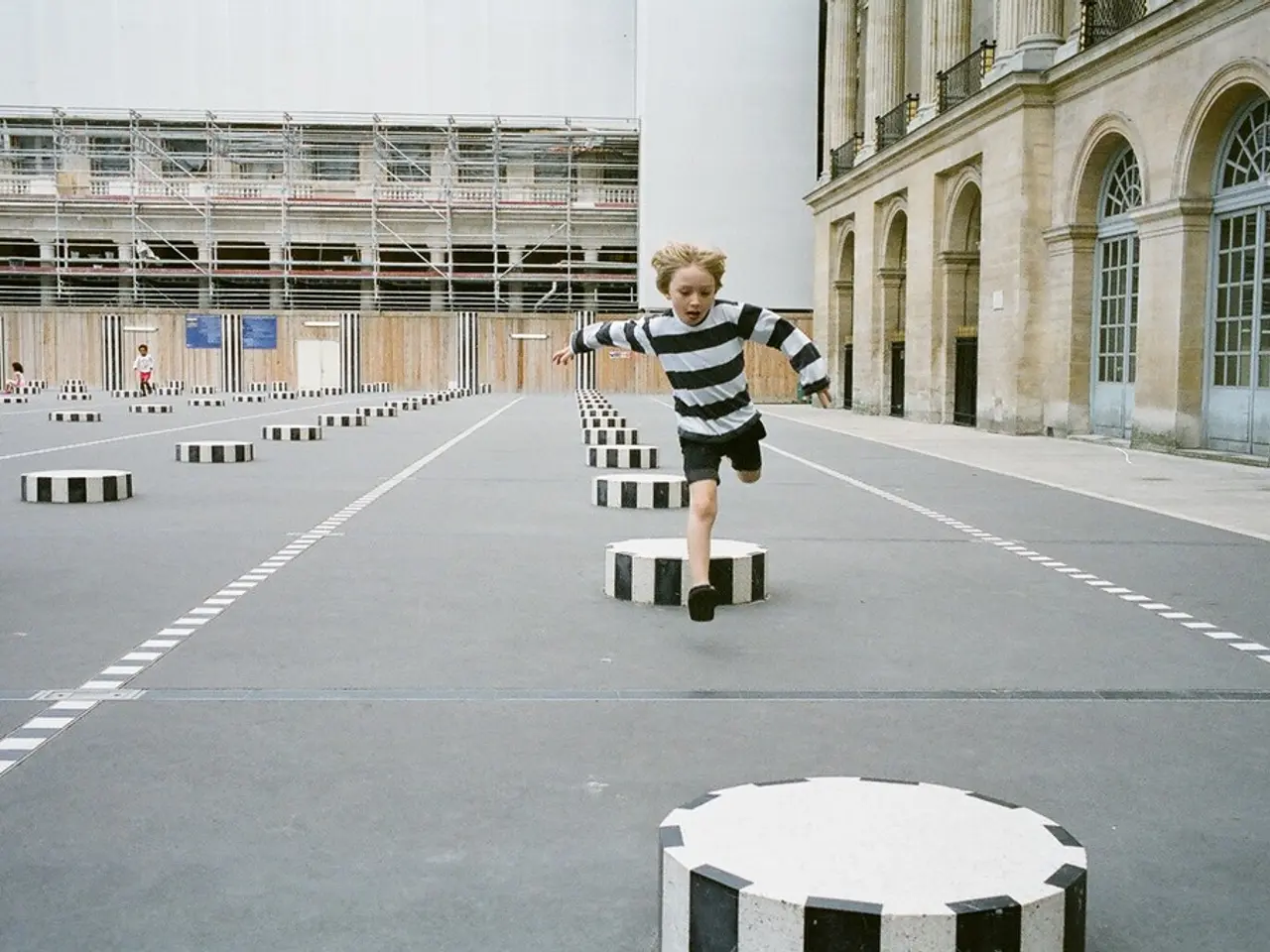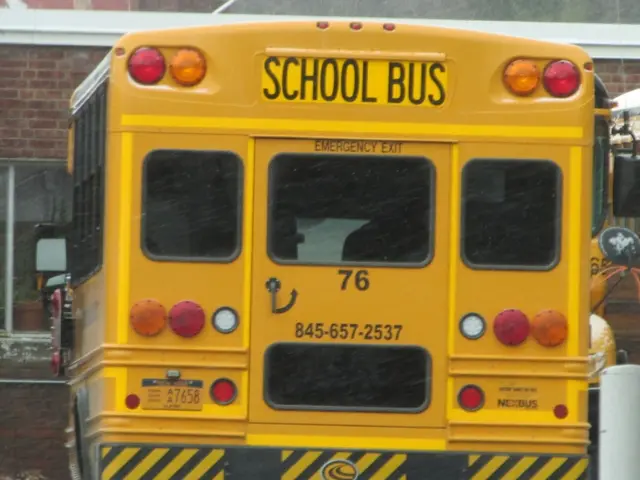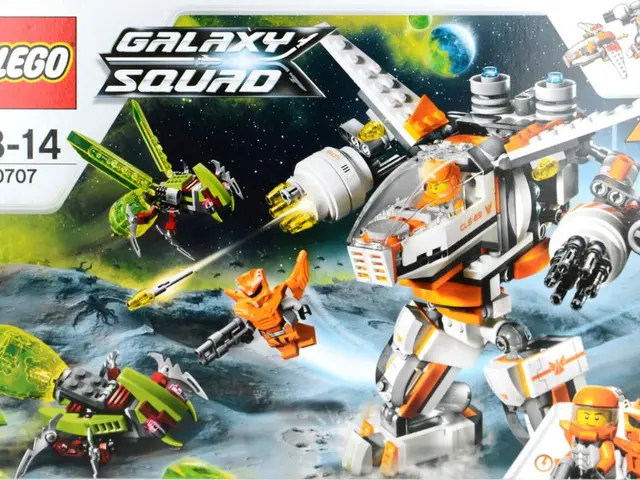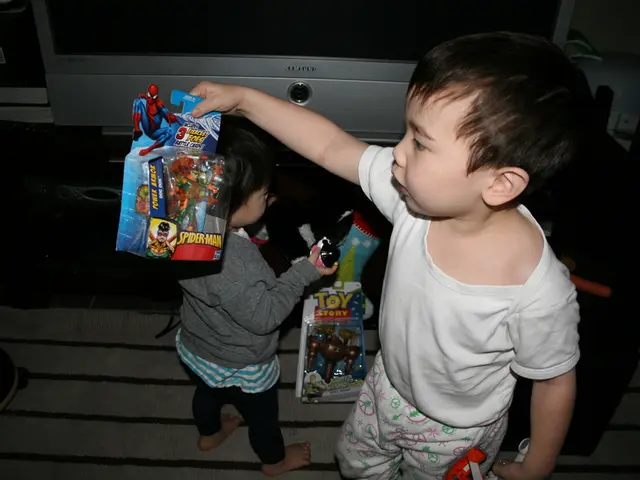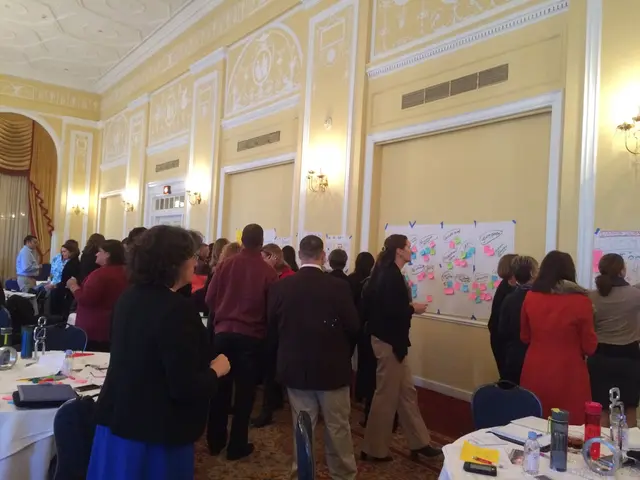Investigating interactive education through play at the Children's Museum in Lecce
Unleashing the Power of Play-Based Learning:
Kiddo, here's the deal about that Einstein fella and his profound quote on play. Play ain't just no-strings-attached, fun-time for children. Nah, play is a goddamn educational powerhouse! Here's why.
First off, think of play like the ultimate, unstructured research lab for the young 'uns. Through play, children work their magic, solving problems, developing emotional intelligence, and trying to make sense of this wild world we live in. It's not time off, it's prime time learning!
At the Children's Museum, they don't treat play as a reward, but as a vital curriculum. Each exhibit invites curiosity, discovery, and joy, and behind every giggle or gasp of surprise, you'll find genuine cognitive growth happening.
What's the Lowdown on Play-Based Learning?
Play-Based Learning is a learning strategy that utilizes play as the main context. It's all about giving children the freedom to explore, create, and experiment, and in doing so, they develop valuable skills, even if they don't realize it.
This type of learning is:
- Child-led, focused on the interests and choices of the children
- Process-oriented, emphasizing how children interact and think, not on outcomes
- Open-ended, with no one "right" way to play or finish
- Fun and engaging, because when things are fun, learning sticks better!
Play-Based Learning is particularly brilliant in early childhood, when brain plasticity is at its peak, and learning through practice is most effective.
The Science Behind Learning Through Play: It's a Brain Thing!
Play isn't just a buzzword; it's biologically essential. According to research by the Harvard Center on the Developing Child, play plays a crucial role in developing executive functions like working memory, self-regulation, and flexible thinking. These are the mental muscles kids use for concentration, decision-making, and solving problems.
Another study conducted by the LEGO Foundation discovered that Play-Based Learning boosts literacy, math, and emotional well-being, especially when children receive support from caring adults who appreciate the process.
In 2018, the American Academy of Pediatrics even recommended "prescribing play," citing evidence that play supports brain development and reduces stress in children.
See Play in Action at the Children's Museum:
Here at the museum, we believe that playing hard leads to learning hard. Our exhibits are designed to engage the whole kid—mind, body, and spirit.
The Yes Zone: Giving Kids the Permission to Pump Their Brakes, Be Silly, and Let Loose
In the Yes Zone, we encourage children to get crazy, jump, laugh, and spin in a safe, supervised area. This kind of physical, social, and unstructured play is vital for emotional regulation and self-confidence. It's all about the freedom to be themselves!
Funny Faces: Playing With Emotions
This exhibit features distorted mirrors, spinning eyes, and moving facial parts that invite children to create their own silly expressions. It's not just for laughs; kids can explore facial signals, emotions, and symmetry through play.
Captain's Wheel: Imagination and Perspective
Children steer the wheel of a humongous ship and bark commands, taking on roles like the captain or crew members. Pretend play like this helps kids understand roles, practice language, and develop empathy, core elements of socio-emotional learning.
Domino Drop: Anticipation and Cause and Effect
Children align massive cards and watch them fall, grinning. They test spacing, weight, and height, often without realizing they're learning about force, balance, and chain reactions. It's pure play, but it's also basic technology learning in disguise!
Pull & Lift: Smashing Brains with Fun
This exhibit challenges kids to haul ropes, lift weights, and test levers. The physical stuff keeps their attention, but the underlying principles—mechanics, force, and tension—provide a sneaky education in science! Repeated attempts and trial and error build both understanding and resilience.
What Educators Have to Say:
"Children use play to test life," says Dr. Elisa Conti, a Milan-based early childhood educator and play advocate. "Through play, they test ideas, resolve conflicts, and build emotional strength. That's where they do their deepest thinking."
Museum educators often stress that children don't need instructions, just permission. And so, we see problem-solving, cooperation, concentration, and creativity, just to name a few!
What the Research Shows:
A 2020 study in Nature Human Behaviour discovered that play improves cognitive flexibility and learning adaptability. Children who spent more time engaged in unstructured play were better at shifting tasks and generating new ideas.
Other studies show that play-based environments improve oral language skills as children describe their actions, negotiate with their peers, and tell stories.
What Families Experience:
Parents often compliment how engaged their children are in playful exhibits, sometimes even refusing to leave them behind! According to a parent, "My son didn't want to leave the Pull & Lift station. He kept saying, 'One more try, I almost got it!' That persistence? I don't even see that with homework!"
Another parent shared that the Captain's Wheel sparked an elaborate, on-going game that lasted for hours and even days at home.
When play is meaningful, it sticks around, growing into stories told around the dinner table, and family traditions.
Why Play-Based Learning Matters:
In a world that often pushes kids towards academics, play reminds us that joy and discovery are the true foundations of learning. Through play, children build brain pathways, emotional strength, and social skills, all while maintaining a sense of wonder and a curiosity for life.
Play ain't a distraction from learning; it's learning itself! So go ahead kiddo, put on that play cap, and dive into the profound world of play-based learning!
[1] The Science of Play - Harvard Center on the Developing Child
[2] Playful Learning - LEGO Foundation
[3] The Power of Play in Child Development - AAP
[4] Play and Learning - Nature Human Behaviour
[5] Play and Language Development - SAGE Journals
Play-Based Learning isn't merely focused on a particular subject; it encompasses home-and-garden, art, lifestyle, education-and-self-development, and learning by integrating play into various aspects of life.
For instance, playing with dominoes in a home setting can help children understand the principles of mechanics, force, and chain reactions, while playing with dolls can foster empathy and emotional development. Similarly, creating artworks in a lifestyle setting can encourage creativity and self-expression, and visiting a museum can stimulate cognitive growth through exploration and discovery.
Moreover, Play-Based Learning is an essential tool for lifelong learning, nurturing the curiosity and engagement required to undertake complex tasks, as suggested in several studies on play and cognitive flexibility.
